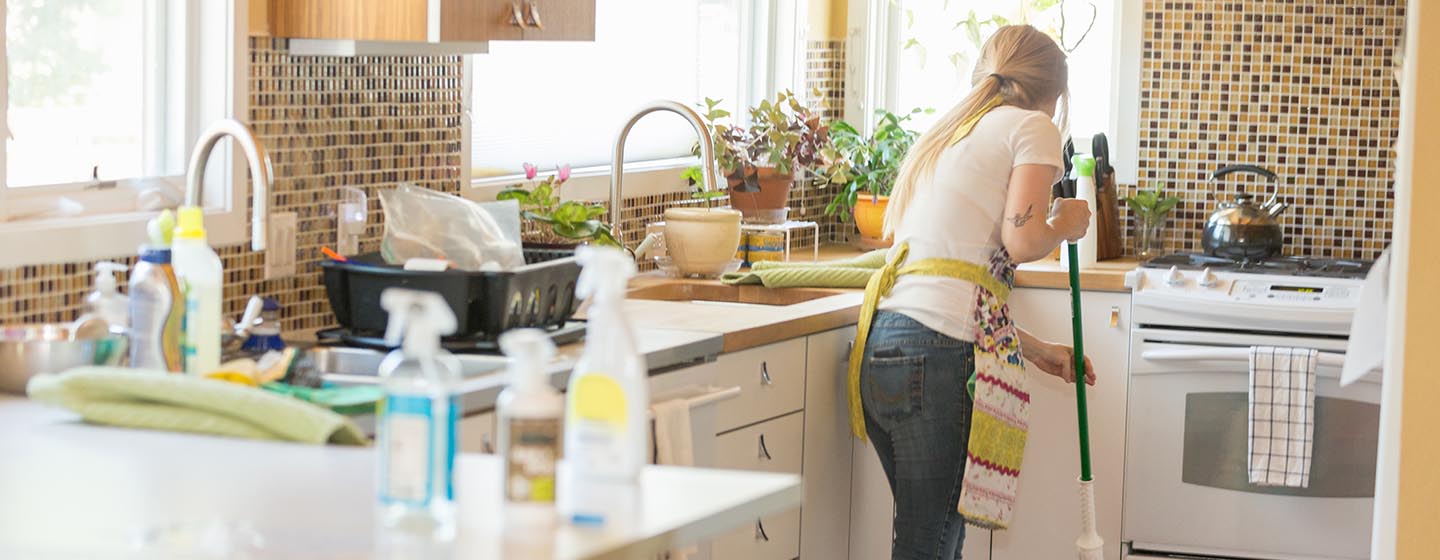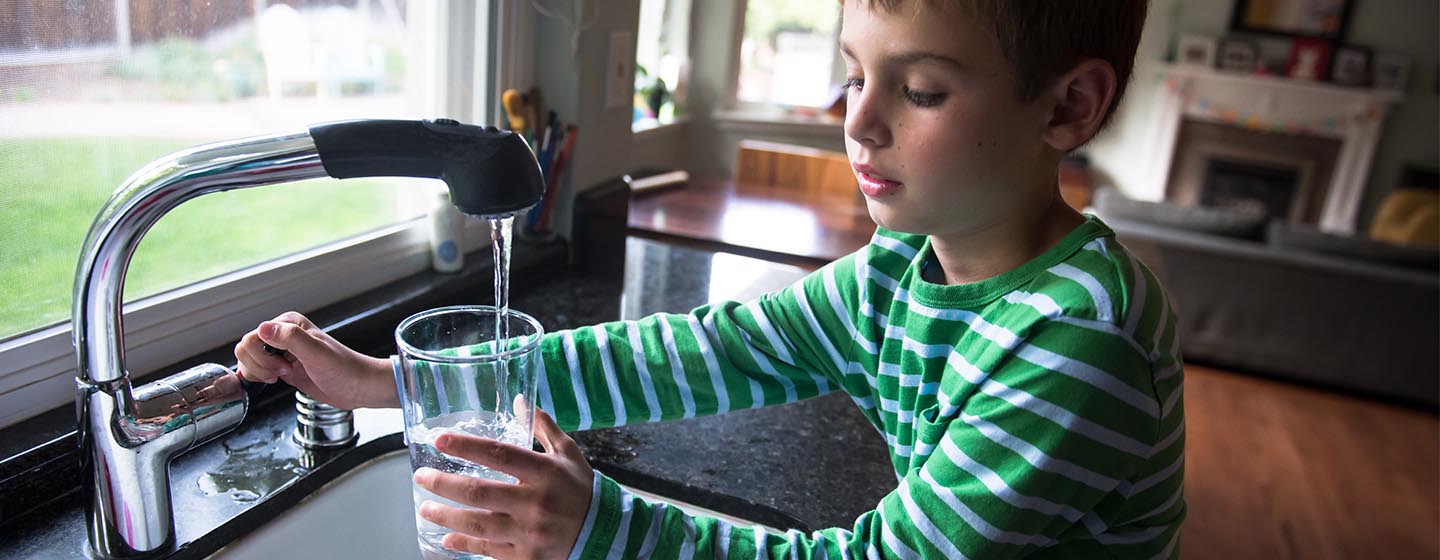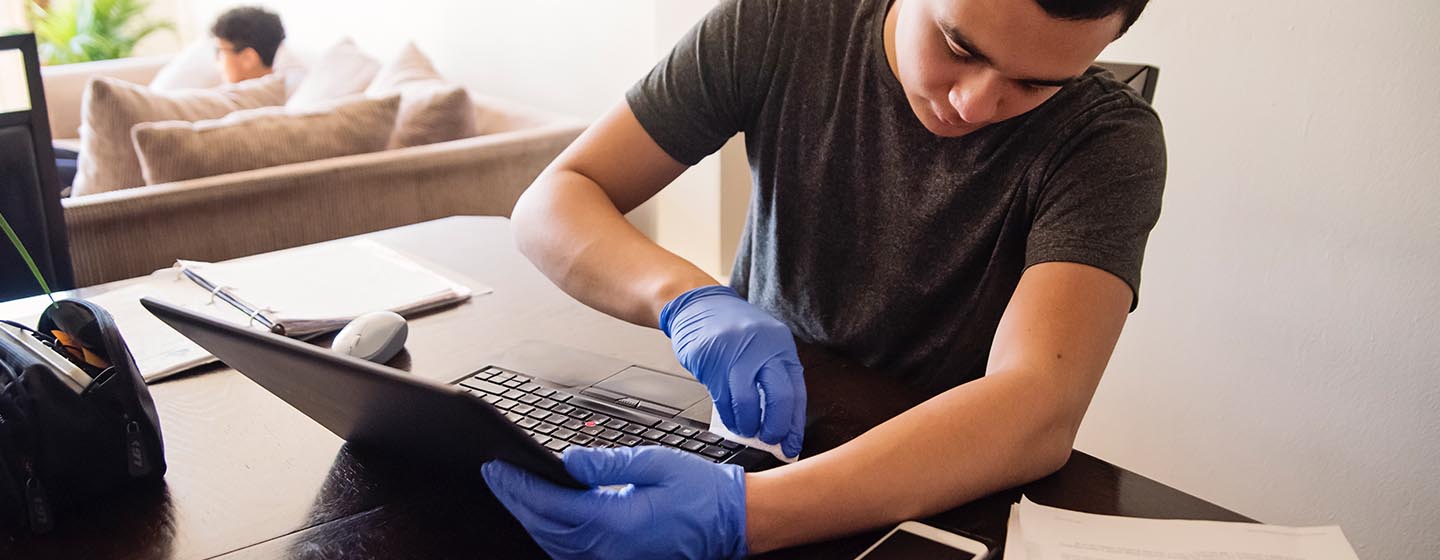Deep cleaning tips for your home
While coronavirus disease (COVID-19) is new, a study recently published in the New England Journal of Medicine suggests that the virus can live on surfaces for a few hours or several days. In particular, the virus can remain on cardboard for up to 24 hours and up to two to three days on plastic and stainless steel.
Naturally, this makes us think about the areas and surfaces in our homes where the virus can live. Health Canada also emphasizes that falling sick with the COVID-19 disease primarily happens from droplets airborne or alive on surfaces which somehow get into your eyes, nose or mouth.
So, being diligent about social distancing, washing your hands and not touching your face will help keep you protected, and so will disinfecting your home, too.
We’ve collected tips from the BC Centre for Disease Control (BCCDC) and Health Canada, along with information to help you understand how to effectively disinfect your home and do all you can to keep it a safe place.

Cleaning and disinfecting must be combined
During this COVID-19 pandemic, it’s important to go beyond cleaning the surfaces in your home and making sure you disinfect them regularly. According to the Public Health Agency of Canada, cleaning typically uses regular soap or detergent and water, which doesn’t always kill germs.
“Disinfecting”, on the other hand, means cleaning areas first with soap and water, followed by using a chemical agent, such as bleach to help kill the germs that can cause infection.
How to effectively disinfect your home
Germs can spread easily in the home. Follow these tips to ensure you’re cleaning like a pro.
Step 1: Wear gloves
Be sure to discard them after use, or if they’re reusable, use them only for cleaning and disinfecting.
Step 2: Clean surfaces or items
Use regular cleaning products, detergents or soaps to remove germs, dirt and impurities.
Step 3: Disinfect with a store-bought disinfectant or bleach solution
Use only approved hard-surface disinfectants that have a 8-digit Health Canada Drug Identification Number (DIN) that confirms it’s safe for use in Canada. If a store-bought disinfectant isn’t available, the BCCDC recommends mixing 1/50 solution of bleach and water (e.g. approximately 20 ml bleach per litre of water or 2 1/2 ounces per gallon).
Follow label instructions: Cleaners may have specific directions that make them more effective. For example, some cleaners require that they be kept wet or remain on a surface for a certain amount of time before you wipe or wash it away.
When doing laundry: Don’t shake laundry items to avoid spreading any contaminants. Use the warmest water possible for washing and ensure items are completely dry before storing them.
Get more cleaning safety tips on HealthLinkBC’s website.

Hot spots and how often to disinfect
To protect against COVID-19, health officials, along with BCCDC advise families to clean and disinfect their homes and everyday items at least once a day.
Common surfaces:
- Sinks and faucets (kitchen and bathroom)
- Toilets
- Bedside tables
- Doorknobs and hand railings
- Light switches on walls and lamps
- Counters and tabletops
- Kitchen cabinets, refrigerator and microwave handles
- Commonly used appliances (coffee maker, toaster)

Regularly touched items:
- Phones, TV remotes, tablets, keyboards, laptops, video game controllers and kids’ toys
- Towels and dishcloths — Don't share towels, ensure each person in your home uses their own. Wash hand towels and dishcloths daily and rotate them with fresh cleaned ones
- Pillow cases — Regularly change and launder in warm water
Be careful when cleaning your phone, computer equipment, other electronics and kids’ toys. Check product manuals and manufacturers’ websites for recommended cleaning instructions.
Other measures
- When bringing in items from outside, such as a backpack, purse, courier packages and bags for take-out food or groceries, wipe them down items and then wipe or spray them using a disinfectant. Avoid touching your face and wash your hands as soon as you’re done handling those items
- Remove jackets and shoes and leave them at the door
- Avoid putting easily contaminated items like phones or purses on kitchen counter tops, tables and other food surfaces
- Open the window in each room to bring in fresh air every day
When it comes to food, the Canadian Food Inspection Agency (CFIA) says there’s currently no evidence that food is a likely source of COVID-19 and Health Canada’s regulations for washing produce and other foods remain the same.
Additional resources
- If you’re feeling sick or have become infected with COVID-19, here are instructions from the Public Health Agency of Canada on how to avoid contaminating common items and surfaces in your home
- Tips for multi-unit buildings. BC Centre for Disease Control: Tips for residents of apartments and other multi-unit buildings







